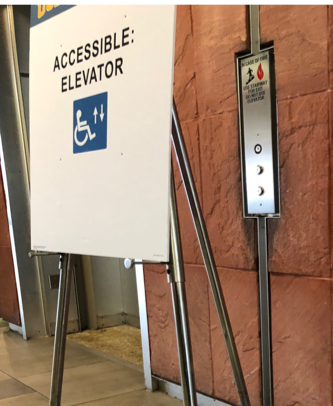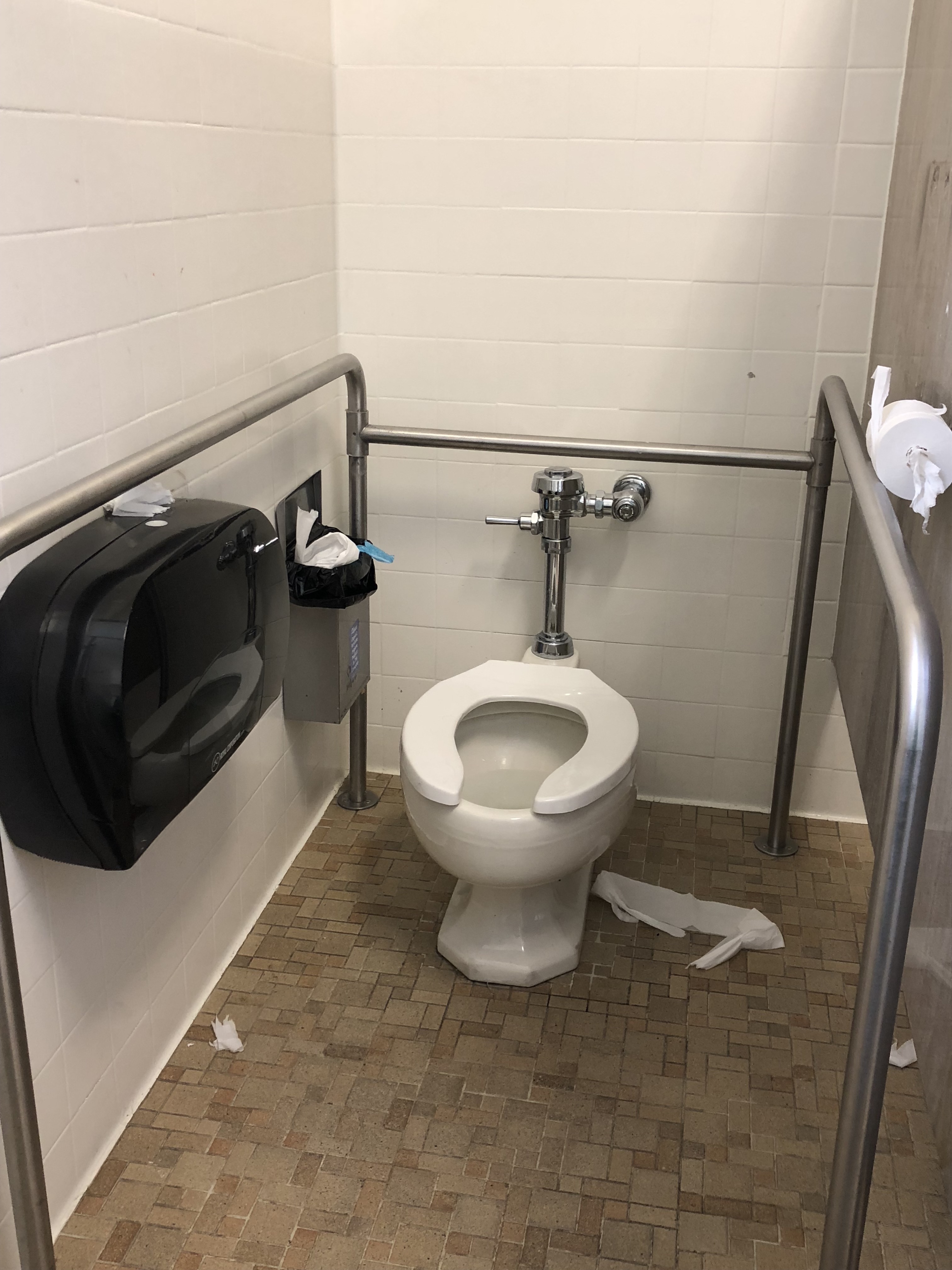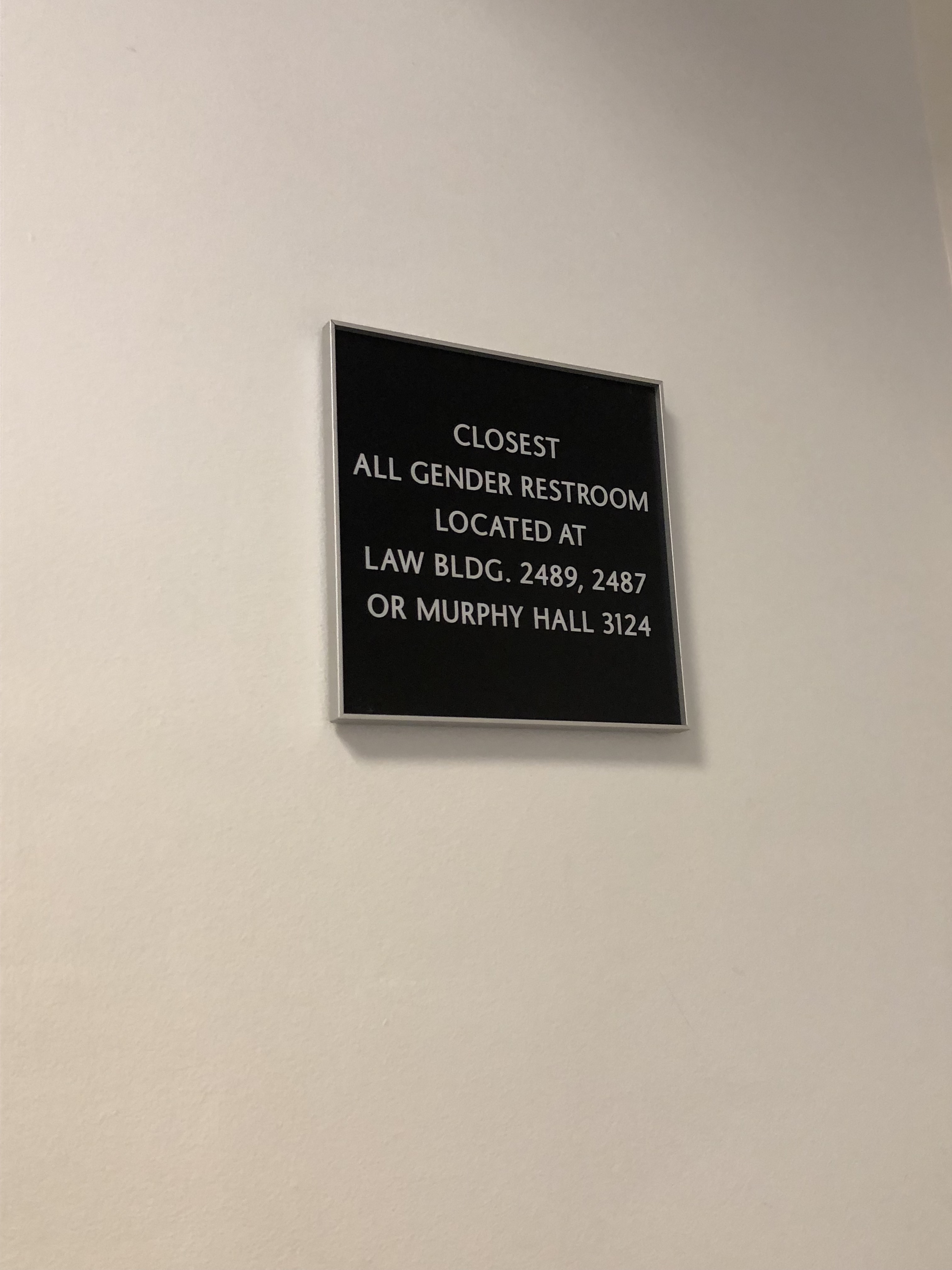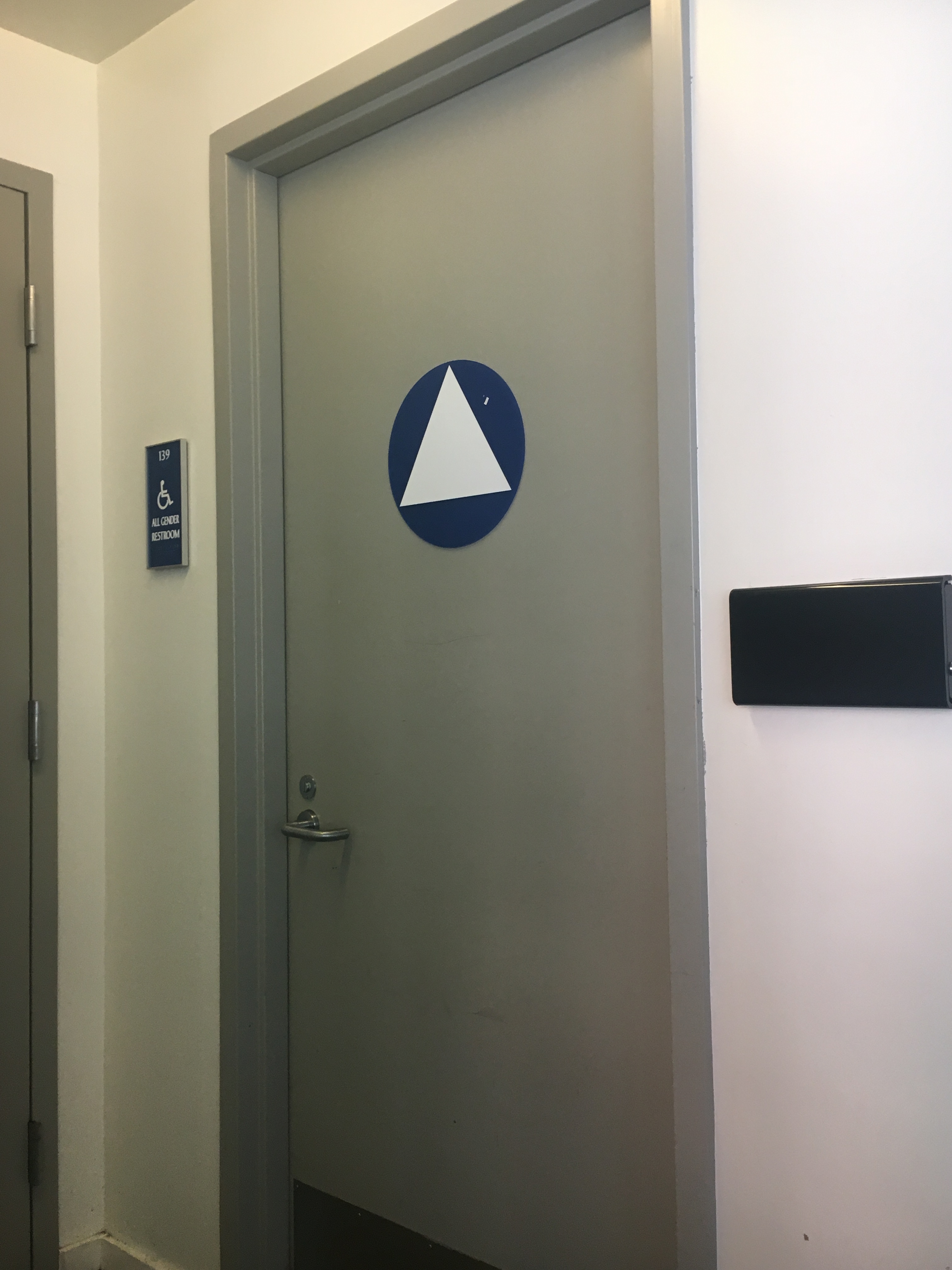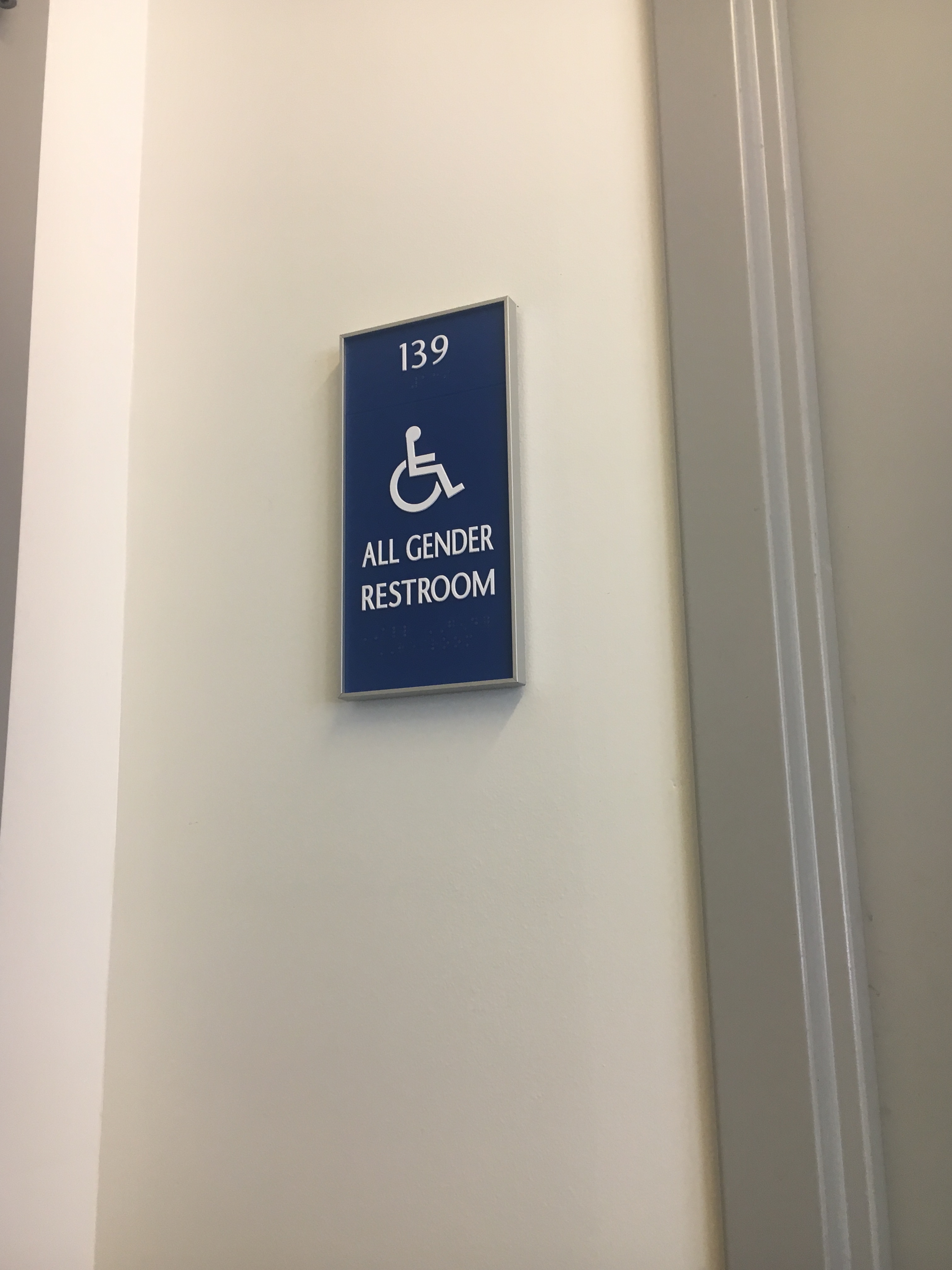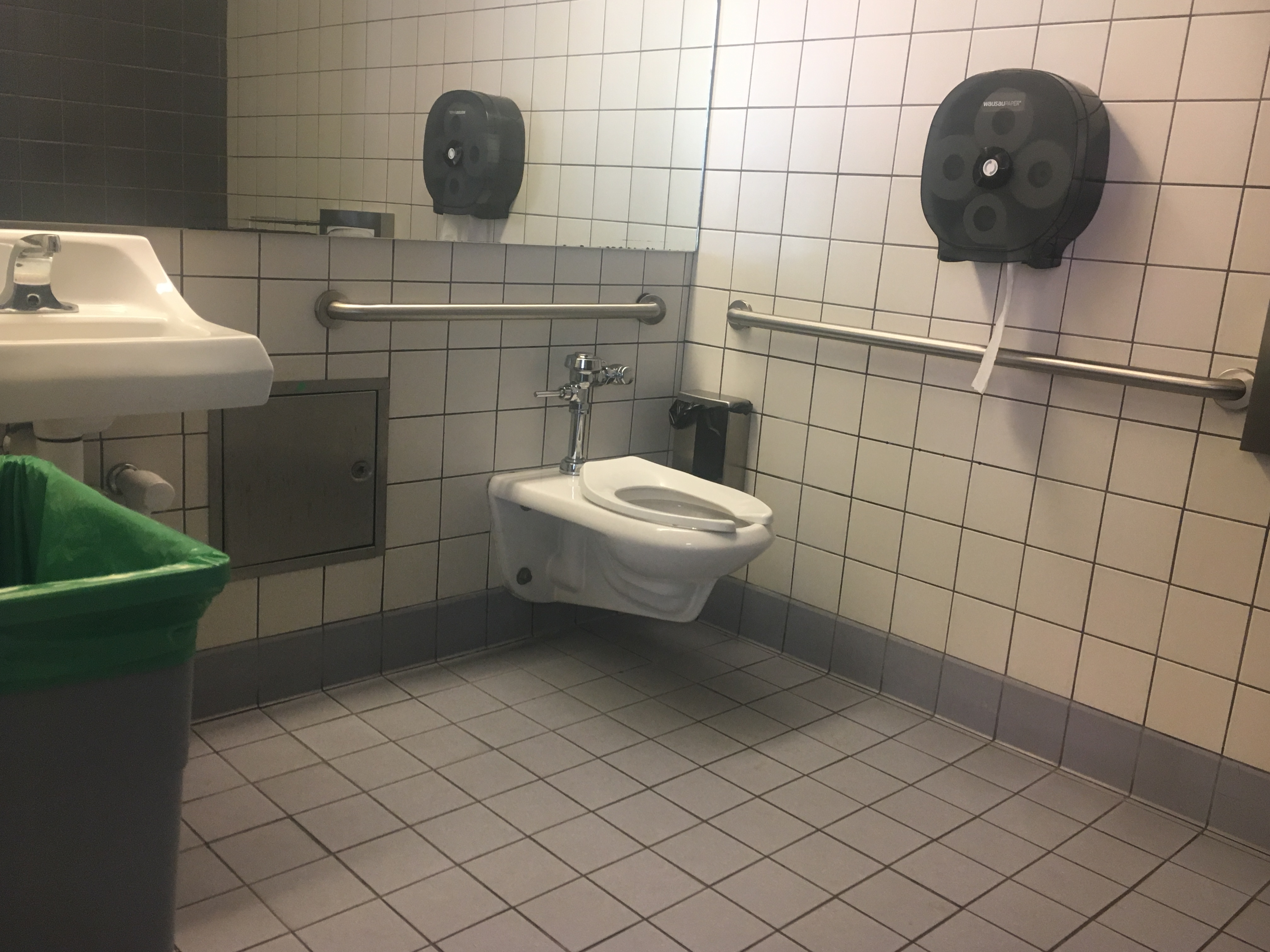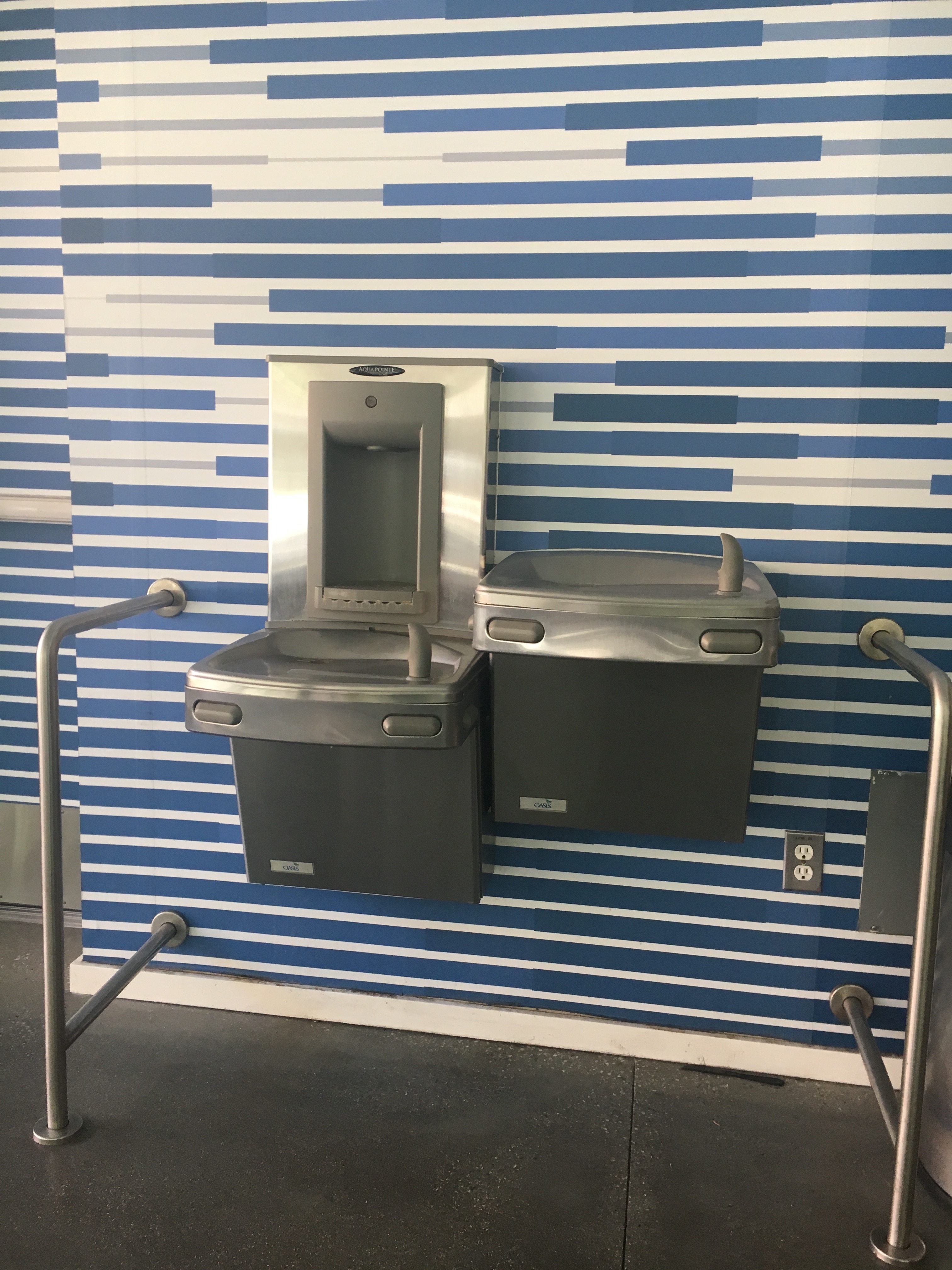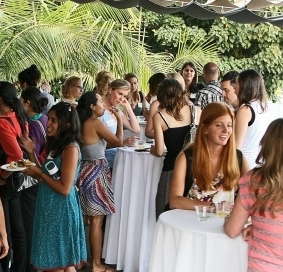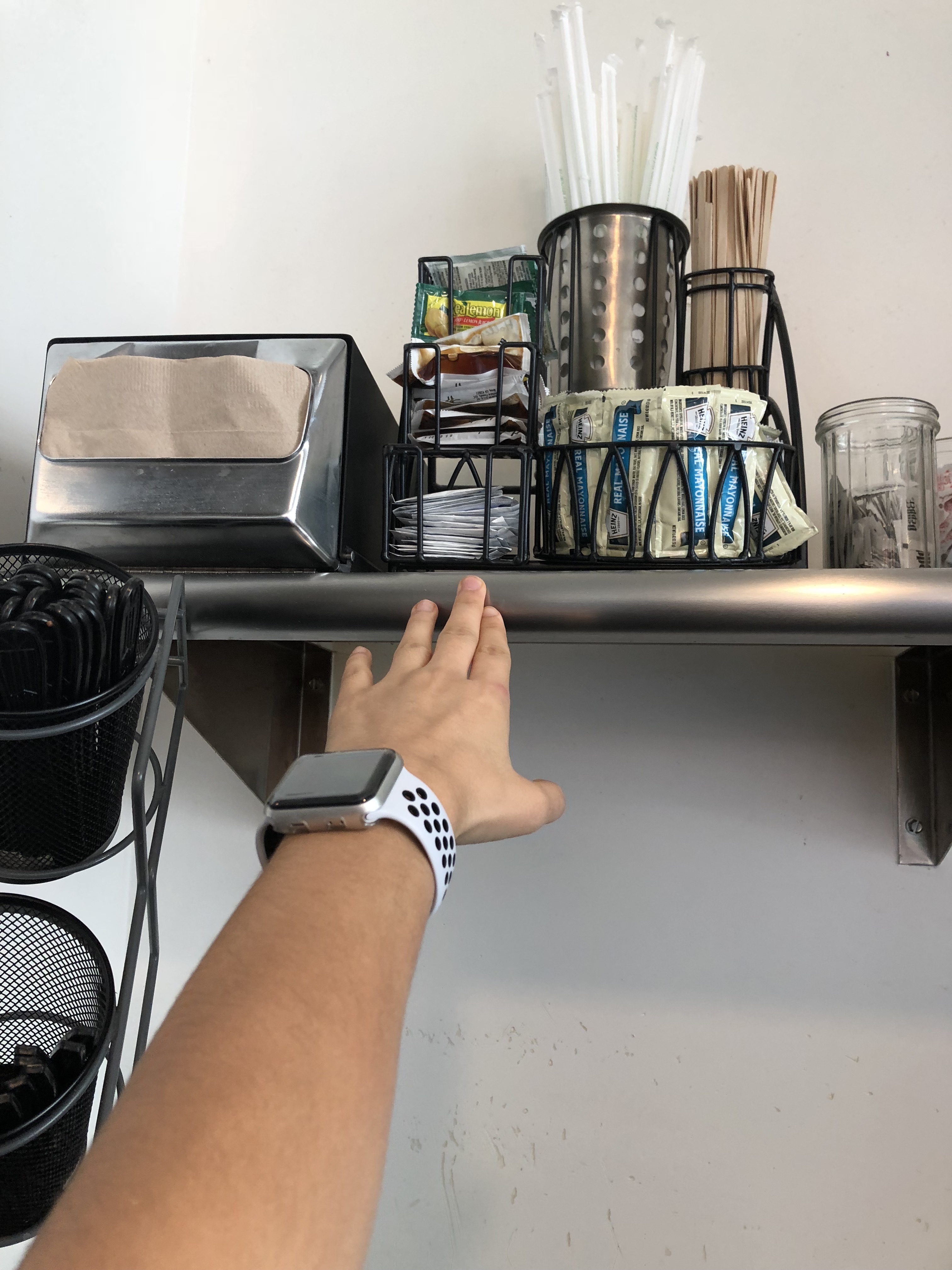Possible Problems & Suggested Solutions (PPSS)
Possible problems (when it is a problem & why it is a problem) and a suggested solution.
Main Sections:
Sub-Sections:
Accessibility concerns in regards to getting to the venue and event.
Accessible Parking
(see Accessible Parking Technical Information)
Percentage of Spots in the Parking Lot
When is this a problem? This should only be a problem when makeshift parking needs to be created for an event. Already established parking lots should already have the appropriate number of designated spots. If you find a parking lot or structure that does not seem up to code, please contact the UCLA ADA/504 Compliance Office.
Why is this a problem? Mobility is often an issue for people with physical disabilities. This means that accessible parking close to the event is important to minimize physical strain. Additionally, special parking spots are needed to accommodate mobility equipment like wheelchairs and wheelchair accessible vehicles (see Technical Information ATE 1.d: Van Accessible Spots).
What to do about it! See diagram in Technical Information ATE 1.d.iii to see how to create a makeshift accessible parking space with cones and a temporary ramp. See the diagrams in Technical Information ATE 1.d.ii for the proper measurements of the accessible parking space.
Steepness/Flatness of Parking Lot and Spaces
When is this a problem? This is a problem for makeshift parking or disabled street parking on a hill or incline. At UCLA this could be an issue for those trying to find disabled street parking on the Hill. Established parking lots or garages shouldn’t have an issue.
Why is this a problem? As previously stated, parking on an incline is very difficult for someone in a wheelchair. Some ramp and lift vans cannot operate on slopes and pushing a wheelchair up or down hills can be very difficult.
What to do about it! Be knowledgeable about the location of the closest parking structures with accessible parking. If an event takes place at a venue with incline, make sure to plan out an accessible route with elevators.
Alternative Lots/Spaces
When is this a problem? Overpopulation of accessible spots has become a very serious problem in recent years. Be prepared to make arrangements ahead of time if a higher number of disabled guests will be attending your event. It’s always good to have back-up accessible parking in mind, even if you don’t think it will be needed.
Why is this a problem? Again, there is a large problem with oversaturation of accessible parking spots. Since DMV disability placards and license plates are given out frequents and for many reasons, this problem of running out of accessible spots is becoming astonishingly frequent.
What to do about it! Be knowledgeable about the location of the closest parking structures with accessible parking. If you are expecting a large number of disabled guests, prepare by creating additional makeshift accessible parking spots or reserving existing areas for more disabled parking. The best way to handle this problem is to reserve accessible parking spots with accessible aisles for persons who have wheelchairs or mobility devices and reserving other nearby regular inaccessible parking spots for those who have a disabled placard or plates but do not need the accessible aisles. This would require signage and parking monitoring and enforcement. This method is best because it eliminates the need for creating makeshift accessible parking and simply can be enforced by having someone ask vehicles upon entry if they have any mobility equipment (wheelchairs, scooters, etc. [not canes and walkers]) and directing them to the appropriate areas. For accessible parking difficulties, please reach out to the UCLA ADA/504 Compliance Office and UCLA Transportation Office.
Van Accessible Spots
Subtopics Explored further in the Technical Information document: Rear Chair Lift Vans, Side Ramp Vans and Alternate parking option for Ramp/Lift Vehicles
When is this a problem? Parking lots should have the proper ratio of van accessible spots (see Table 2 in Technical Information ATE 1.d). However, again, overpopulation of accessible spots has become a very serious problem in recent years. Be prepared to make arrangements ahead of time if a higher number of disabled guests are expected to attend your event. Also, another frequent problem is people leaving objects in the access aisles beside van accessible spaces.
Why is this a problem? Ramp and lift vans, which are used to transport wheelchairs and scooters need extra space to load and unload the mobility device and passenger(s). Depending on which type of vehicle, they will need extra space either to the back or side of the vehicle. This requires extra-large parking spaces and an access aisle. The access aisle being blocked can seriously prevent a disabled person from being able to park there and exit their vehicle.
What to do about it! The best solution is the allocating of spaces as aforementioned in the “What to do about it” section for Alternative Lots/Spaces. If that is not preferable, then makeshift spaces can be created (see the diagrams in Technical Information ATE 1.d) Make sure the access aisles are clear!
Bird Scooter Blocking Access Aisle and preventing Wheelchair User from Exiting Van
Public or Alternative Transportation
Subtopics Explored further in the Technical Informational section: Bus Systems, Uber/Lyft (WAV, Assist, and Access Programs), and Taxis.
(see Public and Alternative Transportation Technical Information)
When is this a problem? Some disabled persons either cannot drive and/or use standard public transportation. Therefore, accessible transportation can be key for disabled persons attending and participating in you event.
Why is this a problem? Persons with visual impairments can have a lot of difficulty navigating an unfamiliar public transportation route and may prefer a rideshare service like Uber or Lyft so that they can be dropped off close to the final destination, probably in a more familiar spot. Persons with mobility disabilities who cannot drive may choose public transportation or rideshare programs as an alternative as well.
What to do about it! Becoming familiar with the bus routes that can get guests closest to the event venue. The rideshare programs are currently limited to certain drop off locations on the UCLA campus during the hours of 7am to 6pm on weekdays. Therefore, having clear directions from the drop off zones to the event venue and/or a guide at the drop off zones can help those with disabilities. Please check this map for the UCLA Ride-Hailing Zones.
Routes
(see Routes Technical Information)
Curb Cuts
When is this a problem? Curb cuts are the space near streets where the curb is eliminated and becomes flushed with street. These are seen at intersections and crosswalks for wheelchair users to cross seamlessly. Curb cuts need to be considered when planning an accessible route from parking to the event venue.
Why is this a problem? The only time this would be a concern is if the planned parking area is far from the curb cuts or the curb cuts are damages or unusable in anyway.
What to do about it! When planning your parking area for your event, consider the accessible route including the convenience and usability of the curb cuts.
Flat, Unobstructed Pathways
When is this a problem? This is a problem when the pathway from parking to the event is either obstructed or has a significant incline.
Why is this a problem? This is a problem because wheelchair users cannot easily maneuver around obstacles in the pathways or manage large inclines or declines.
What to do about it! When planning your parking and routes to and from the event consider any slopes in the pathway. Also, don’t put signage, decorations or other props in places that partially or completely block a path.
“Accessible Elevator” sign blocking the elevator buttons
Distance
When is this a problem? For some persons with mobility disabilities, farther distances can be more concerning than the difficulty of the terrain. Additionally, if a longer route is more complex, this can prove difficult for those with visual impairments as well.
Why is this a problem? When planning an accessible route, one should consider the fact that some disabled persons may have difficulty with the length of a route in addition to the obstacles on that route.
What to do about it! Get an estimation of about how long the accessible route is and list it on any directions posted about the event.
Ground Type
When is this a problem? Ground type can be a concern if there is a loose ground types like gravel, loose dirt, or sand. There can also be difficulty when certain smooth surfaces become slick and dangerous due to moisture.
Why is this a problem? Some ground types are more difficult for wheelchairs and mobility devices to travel across. Additionally, someone with balance impairments or joint difficulties also have difficulty on these ground types. Slick ground can also cause a wheelchair wheel to slip and lose control. Also, surfaces that are lumpy and not flat, like grass can be difficult. Wheelchair wheels can rip up the terrain and dirt can get in the treads and loose dirt can be difficult to push through. Any amount of condensation makes a grassy patch muddy which provides even more severe difficulties.
What to do about it! They best thing you can do is to avoid event venues with terrains like the ones listed above. If an event requires a location that has a terrain like this a tarp can be put down to help with the issue of loose ground types. Make sure that any smooth indoor floors are dry (haven’t been recently mopped etc).
Signage
When is this a problem? Signage to and in and event can be difficult for many reasons. First, sign placement can be difficult. The sightlines for someone in a wheelchair are different than for a standing person. Additionally, visual signage is ineffective for someone with a visual impairment.
Why is this a problem? If the signage can’t be seen either due to certain sightlines or visual impairments it becomes completely ineffective.
What to do about it! Make sure to give clear written instructions on pre-event flyers or online descriptions noting obvious physical and visual markers. Note that even when there is Braille signage, if the blind person is in an unfamiliar area it isn’t always immediately obvious to them where this signage would be. Additionally, assign person(s) to be at drop-off zones or parking to walk those with disabilities to the venue.
Access within the Event (AWE)
Accessibility concerns within the venue and event.
Doors and Entryways
(see Doors and Entryways Technical Information)
When is this a problem? Doors can be problematic for accessibility for a number of reasons. First, doors with knobs instead of handles or grab bar handles that have very little clearance. Another concern is the width of the door. Door clearance can be an issue if a door way is too narrow. Another concern is the heaviness of the door, if the external door requires 8-10 lbs or more of force to open, it should have an automatic powered door button.
Why is this a problem? The handle/knob and door weight issues both can prove to be serious obstacles to a person with dexterity or upper body/arm impairments. The door width clearance should be 32 inches or more to be wheelchair accessible.
What to do about it! If the doors at an event have inaccessible handles or knobs or are particularly heavy the easiest solution is to have the door propped open or have a person to help open the door for guests. If the door is going to be propped open, be sure that the doorstop or object propping the door open doesn’t partially obstruct the path and make it inaccessible. If a doorway is too narrow, another accessible doorway will need to be found.
Spacing for Pathways and Turning
When is there a problem? This is a problem when there is a narrow or partially obstructed hallway or pathway.
Why is this a problem? This is a problem because it can make it difficult or impossible to pivot a wheelchair in these spaces. The minimum passing width is 30 inches wide and 48 inches long for a wheelchair to go in one direction, but to pivot a 60-inch diameter is needed.
What to do about it! Check the width of your pathways. Make sure they are clear of all obstructions; even partial obstructions can create many problems. If a narrow pathway is unavoidable that is wide enough for one direction movement but not pivoting, make sure an inlet, side space or empty room can be used for accessible turns.
Bathrooms
(see Bathrooms Technical Information)
Accessible Stalls
When is there a problem? Some accessible stalls are not wheelchair accessible. Some accessible stalls are only slightly widened and have grab bars to help semi-ambulatory persons who need extra support to lower themselves to the toilet. Another problem is the accessible stalls are frequently used by able-bodied persons. Some persons in larger wheelchairs may not be able to fit in many accessible stalls.
Mobility Assisting Accessible Stall (not wheelchair accessible)
A person in a wheelchair showing how this mobility accessible stall is not large enough to properly accommodate a wheelchair.
Why is this a problem? This is problematic for a person in a wheelchair who doesn’t fit in this particular type of accessible stall. Able-bodied persons also frequenting the accessible stalls is a problem because it means they are frequently dirtier, without toilet paper or sanitary covers, and sometimes even out of order. This can be a serious problem because there is usually only one accessible stall in the bathroom and disabled persons cannot just switch to a different stall.
What to do about it! Be aware of not only where your accessible bathrooms are for your venue, but also what type of accessible stall is there. You can put a sign up on the disabled stall requesting able-bodied persons to not use it unless absolutely necessary to prevent overuse, abuse and preserve the resources. You can check the accessible stall more often to make sure it’s well stocked and clean. Keep companion bathrooms (see next section) for those who do not fit in accessible stalls.
Companion Bathrooms
When is there a problem? Some disabled guests who need extra physical assistance have personal aides to help them with everyday tasks. On some occasions, the aide is not of the same gender. Therefore, this creates the issue of having an aide of another gender going into the bathroom with the disabled person.
UCLA sign indicating the closest companion/all-gender bathrooms
The blue circle with the white triangle indicates companion/all-gender bathroom
Sign outside companion/all-gender bathroom indicating accessibility
Why is this a problem? Going into a bathroom with the disabled person of the other gender may make the aide, the disabled person or the other bathroom users uncomfortable.
What to do about it! The best alternative is to find companions bathrooms near your venue. Companion bathrooms are accessible, single user bathrooms that are large enough to easily fit a wheelchair and the aide. These bathrooms are frequently referred to as family or all-gender bathrooms as well.
The interior of a wheelchair accessible companion/ all-gender bathroom
Elevators
(see Elevators Technical Information)
When is there a problem? Elevators, especially old ones or frequently used ones break down frequently.
Why is this a problem? This can be problematic because if you are relying on one elevator to get disabled people (and possibly able-bodied people as well) to your venue, then if it breaks down disabled persons cannot attend your event.
What to do about it! Make sure that you find alternate accessible routes to your event, including multiple elevators.
Shelter
(see Shelter Technical Information)
When is there a problem? Some medical conditions cause people to have a difficult time regulating their own temperature. Therefore, making sure your event venue is between 50-80°F is recommended by the ADA. Additionally, certain weather conditions like rain can create accessibility problems.
Why is this a problem? As previously stated, some medical conditions hinder a person’s ability to regulate their own temperature. Certain weather conditions can create accessibility problems. Rain can make surfaces slippery and dangerous to wheel on.
What to do about it! As far as temperature control, if your indoor venue has AC and heating, using the already established system is the easiest solution. If your indoor venue does not have these systems, you can plan to obtain fans or portable heaters as necessary. If the venue is outdoors, providing either a permanent or temporary shelter for difficult conditions is important. This could be as easy as putting up umbrella and/or tarps to shade from the sun or possibly having an indoor back-up plan for more severe situations. If your conditions are going to be severe beyond your control (heat, rain, cold, etc.) sending out or posting a warning about these can help those with medical conditions prepare and bring anything necessary to help them (squirt bottles, extra water, extra layers of clothing, etc.)
Water
(see Water Technical Information)
When is there a problem? Dehydration is a common problem for everyone, especially during hot, outdoor events.
Why is this a problem? For people with a wide variety of disabilities (cannot temperature regulate, have medications that dehydrate them, etc.) hydration can be especially pertinent.
What to do about it! The easiest solution is to know where all the water and bottle filling fountains are around your venue. Be sure that there is an accessible one around as well (usually there’s a higher and a lower one beside each other). If your event does not have easily available fountains, a hydration station can be set up by having a large water dispenser on a table and some recyclable cups for guest use. Pro-tip: Have a sharpie available so that guests can label their cup with their name and can reuse them. Getting regular 12-16 oz cups are advisable, getting small tasting size cups can be more wasteful and more difficult for someone with a dexterity problem to handle. It’s best to have a volunteer man the hydration system in case someone needs assistance filling their cup.
Water and bottle filling station with accessible and regular height fountains.
Participation Accessibility (PA)
Accessibility concerns in regards to a disabled person fully participating in the event.
Seating and Position
(see Seating and Position Technical Information)
When is there a problem? Seating and view are a problem if a disabled person’s view (or ability to absorb the information via a different medium) are obstructed due to the placing of their seating.
Why is this a problem? For example, wheelchair users shouldn’t be put in the back because any one standing up at any point can seriously obstruct their view. Wheelchair users are frequently sitting lower than an able-bodied person in a chair, therefore, even sitting behind a person who is sitting can obstruct their view.
What to do about it! Remember! Seating needs differ depending on disability. Consequently, ask the disabled person what would best suit their needs. If someone is semi-ambulatory they could just need a chair with an unobstructed view. If a person uses a wheelchair and does not want/can’t transfer to another chair a chair (or multiple) may need to be removed so that a wheelchair may take its place. A blind person would need to be sitting where they can hear the activity clearly or given a device for audio descriptions of the event. A Deaf person would need an unobstructed view of the activity and of an interpreter or captions of the event. An individual with a service animal would need a seat with additional space for their service animal to be with them out of the way of foot traffic or pathways.
Furniture Accessibility
(see Furniture Accessibility Technical Information)
When is there a problem? Making sure furniture is accessible can be a tricky task since, as previously mentioned, persons with different disabilities need different accommodations.
Why is this a problem? Having furniture not be accessible can negatively impact a disabled person’s experiences and discourage them coming in future. One common mistake is that at events that involve “mingling” high tables, sometimes referred to a bar tables, without chairs are set up to create mingling platforms with high turnover rate as people walk amongst the event. However, these high tables are inaccessible to someone sitting in a wheelchair.
What to do about it! Make sure to not use the high bar tables for mingling events. Make sure chairs are light enough to be easily moved and/or have tables with missing chairs designated specifically as wheelchair spots. Be sure that tables have space below for a wheelchair to be rolled underneath (ie. Look out for table legs or cross-bar supports that would prevent this).
This event has bar tables which stand at about 3 ft tall; much too tall for someone in a wheelchair to use
Accessibility of Materials
(see Accessibility of Materials Technical Information)
When is there a problem? Alternative formatting may be needed for materials for an event depending on disability. Also, ensuring that all materials are within reach is important.
Why is this a problem? If materials are presented in a form that a disabled person cannot completely access, this can exclude them and cause them to not fully enjoy the event.
What to do about it!
For blind guests, provide audio and/or braille formats.
For low vision guests larger print of type materials, clear fonts, bold face, and large contrasts between ink and paper colors can be the best solution.
For Deaf guests, provide interpreted or captioned materials. See the Resources tab for information on interpreter and CART vendors and tips. Pro Tip: It should be noted that YouTube auto-captions (and other platforms too) are very poorly transcribed and frequently print nonsensical text. Therefore, if an event can be transcribed ahead of type, this may be a good option. Additionally, helpful and explanatory visuals can be very helpful for a Deaf guest. The CAE has offered to rent their UbiDuo device, which allows a hearing person type transcripts of an event for a Deaf or hard of hearing person in real time, for no cost to student-run events that want to accommodate a Deaf student.[1]
For guests who are hard of hearing, assistive listening systems are usually best. Note that for assistive listening, the amplification will only com for the microphone of the speaker. If there is a question/answer session, the speaker should repeat the question to the audience.
For persons with mobility disabilities, be sure that equipment, utensils or any other materials should not be out of reach of a person in a wheelchair (usually solved by a lower counter or table).
[1] As of Fall 2018. Please reach out to Dr. Nickey Woods, CAE Director, for these requests (see Resources tab).
Cafe supplies on a high shelf
A wheelchair user demonstrating the lack of ability to reach the supplies on the high shelf
Food
(see Food Technical Information)
When is there a problem? Many different medical conditions have a food limitation that accompanies them. Additionally, for someone with a mobility impairment and/or wheelchair buffet-style serving of food can be difficult.
Why is this a problem? If food is provided at an event, make sure to have inclusive options and nutrition information on hand (or a person or caterer who knows). Carrying food and especially unsealed drinks while wheeling can be very difficult and can result in spills, messes and embarrassment.
What to do about it! For food restrictions, the easiest way to handle this is to pick food options without common allergens such as nuts and dairy and providing commonly request alternatives like a vegetarian and/or vegan option. Have an RSVP for the event where people can list any dietary restrictions. Always note the food warnings publicly on advertisements or social media and next to the food itself. For more specific or specialized requests have the guest reach out to the coordinator well before the event, via RSVP or personal communication. For mobility issues, the easiest solution would be to have a volunteer to offer to assist a person with a disability with serving their food, carrying their plate and/or drink and help them transport these items to somewhere they can comfortably eat.
Main Sections:
Sub-Sections:


